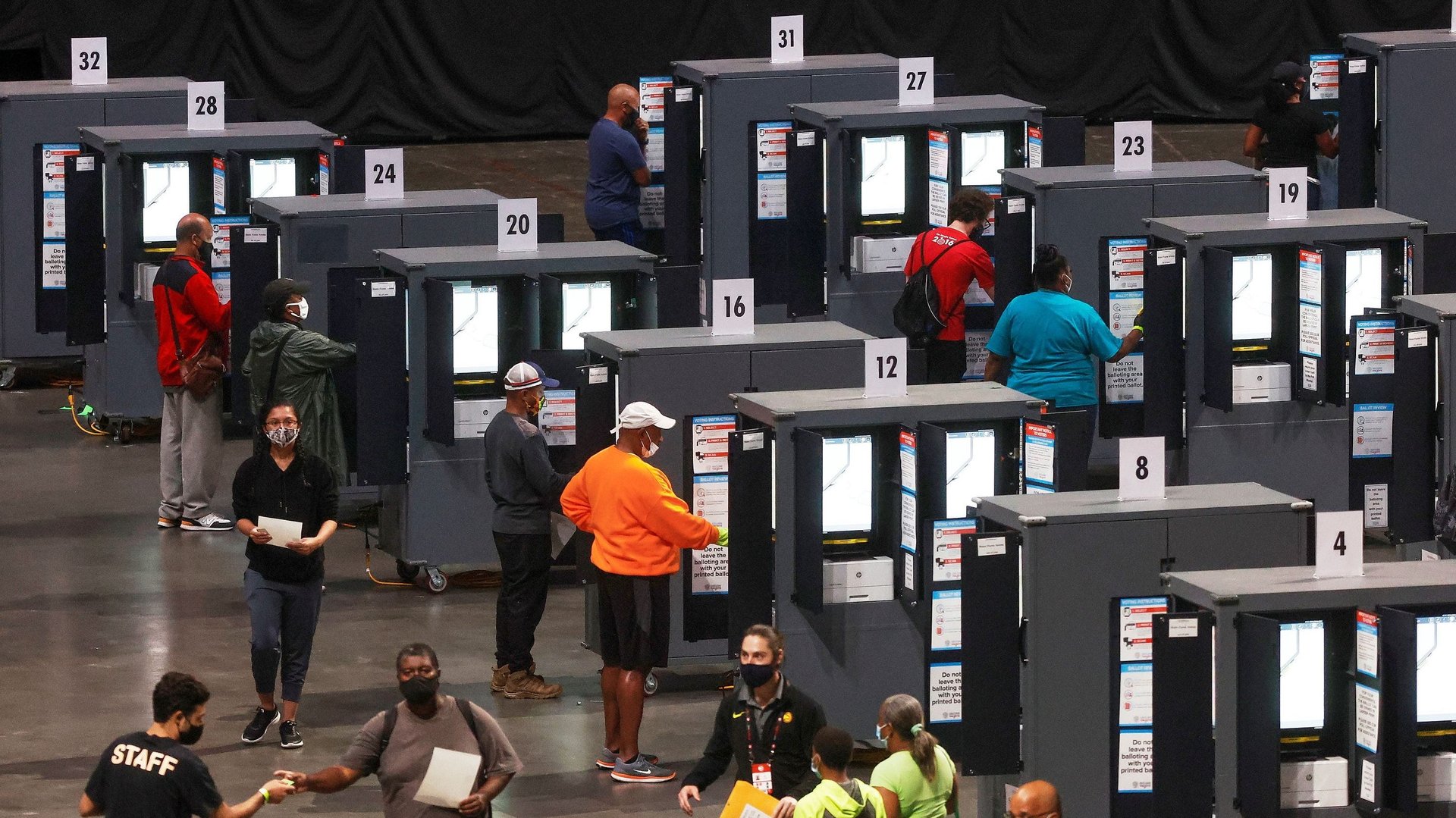What is better, mail-in voting or early, in-person voting?
While the US Election Day is only three weeks away, most voters still have options about how they cast their votes: Through an absentee ballot, by voting early, or at the polling station on Nov. 3.


While the US Election Day is only three weeks away, most voters still have options about how they cast their votes: Through an absentee ballot, by voting early, or at the polling station on Nov. 3.
Given the higher risk of being exposed to Covid-19 at polling places, more citizens than in past years are opting for absentee or early voting—by this time in 2016, less than half a million Americans had voted; this year, 7 million have. “We’re seeing the resilience of the American voter people who are going to show up no matter what to make sure that their voice is heard,” says Andrea Hailey, CEO of Vote.org, the US’s largest voter registration nonprofit.
Citizens don’t have to choose between their health and their democracy, and absentee or early voting gives them options to stay safe.
Absentee voting
There are currently nine states that will conduct this election by mail only, where voting in person is discouraged. Of them, five—Colorado, Hawaii, Oregon, Utah, and Washington—do so on a permanent basis, and while four more—California, Nevada, New Jersey, and Vermont—have opted for mail-in only for the November 2020 election, as a protection against coronavirus. In these states, voters are automatically sent an absentee ballot without having to request it.
Everywhere else, absentee ballots have to be requested. Most states allow absentee voting, including many which in the past have reserved it for those abroad or with health requirements, and have relaxed their rules. Once received, the ballot has to be mailed back to the election office of the voter’s home county—in some cases, there is a postage requirement, although the United State Postal Service will deliver all ballots regardless. In most states there are options for people to bring in the absentee ballot they received in the county’s election office and vote there, for what is called, somewhat paradoxically, in-person absentee vote.
In many states, voters can also track their ballot.
However, with the election so close, voters might be running out of time. While they still can apply for a ballot, they might not be able to receive it and send it back before their state’s deadline. “I would say as of two weeks prior to the elections, you are starting to push it,” says Susan Dzieduszycka-Suinat, the president and CEO of US Vote Foundation and Overseas Vote, an organization providing information and support to voters. “But if you don’t feel physically safe from a health perspective, or from any other perspective, it’s better to request a ballot than do nothing—you might be surprised that it can all work out just fine.”
Early voting
“If voters feel safe from a health standpoint and it doesn’t make them nervous for their own personal wellbeing to go and vote in person, then I would suggest early voting,” says Dzieduszycka-Suinat.
Early voting is an option in most states. In states such as Pennsylvania and Rhode Island, citizens have been able to vote in person as early as Sept. 14, while in others, like Maryland, the early voting window won’t open until Oct. 26. Voters should check the early voting dates for their state, and find the location closest to them.
“In some states, early voting is a great option. It cuts down on the line size and people have many days that they can participate in,” says Hailey. If possible, all voters should try and cast their ballot early,
“I would highly recommend to voters that they consider voting early, because they’re really going to help keep the polls freer on Election Day,” says Dzieduszycka-Suinat. “They spread out the density of the crowd at the polling place—it’s good for them, it’s good for the election workers, it’s less stressed.”
With the pandemic increasing lines and complications at the polling place, and the anxiety stoked by a president that keeps casting doubts on the fairness of the election process, it’s paramount for things to go as smoothly as possible. “There are a lot of questions about what’s going to be happening at the polls on Election Day, and I think it’s important for people in this election to stay calm,” says Dzieduszycka-Suinat.
Pick a plan and stick to it
“The biggest thing is make a plan and make it early,” says Hailey. “Once you’ve made that plan go ahead and execute it and make sure you give yourself time.”
Those choosing to vote absentee, for instance, should mail back their ballot as soon as they receive it, while those preferring early voting should pick a date on the calendar and make a plan to go to then polls with their own personal protective equipment (PPE), as what will be provided will vary greatly between different polling station.
“Bring your comfortable clothes, bring your tennis shoes, bring your PPE, bring your face shield—and go vote,” says Hailey.
Whether they prefer absentee ballot or early voting, however, voters should avoid changing their mind. While all states with the exception of Kentucky allow switching from mail-in to in-person voting, in most cases doing so complicates the process. For instance, voters may be required to surrender the ballot they received via mail in order to vote in the polling booth, or have to do so through a provisional ballot.
These additional steps clog up the system, requiring extra work from election administrators.
“Our very strong recommendation after talking with every single state, and with a lot of local election officials, is that if you already requested your absentee ballot, it’s not advisable to change your mind,” says Dzieduszycka-Suinat. “You’re setting yourself up, and you’re setting up the election officials for a lot of extra work, if you don’t pick a plan and stick to it.”